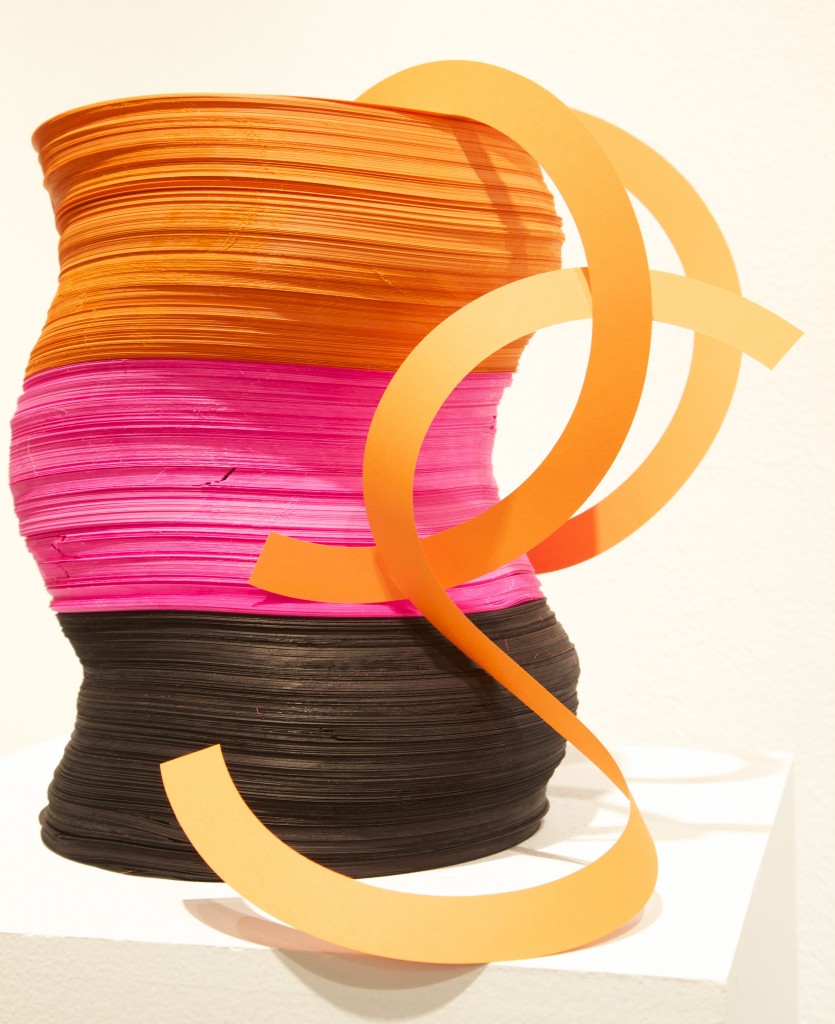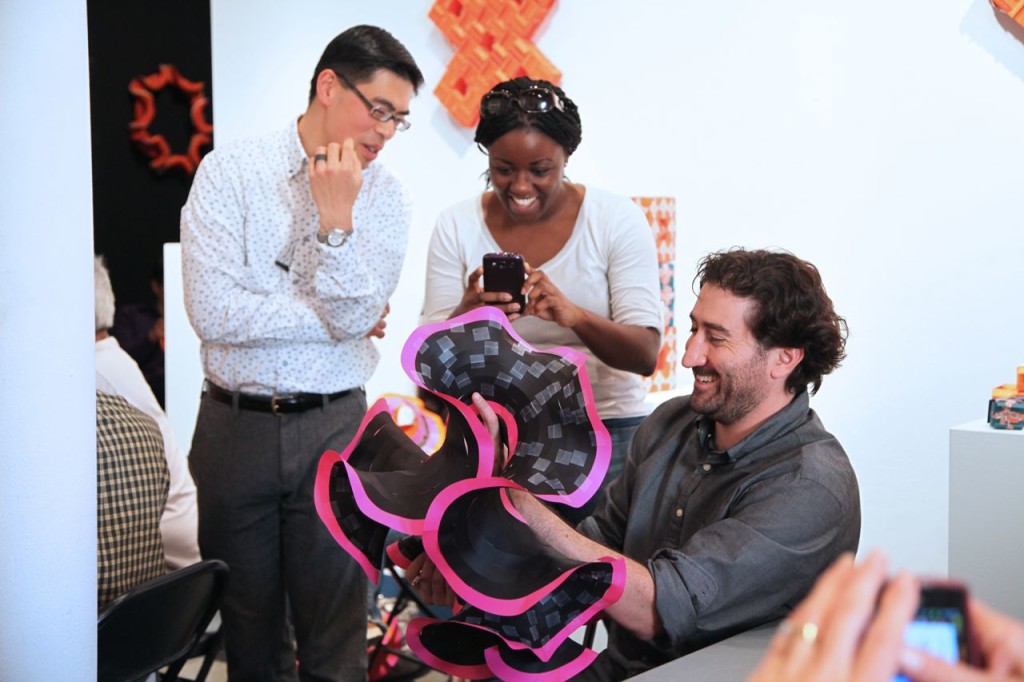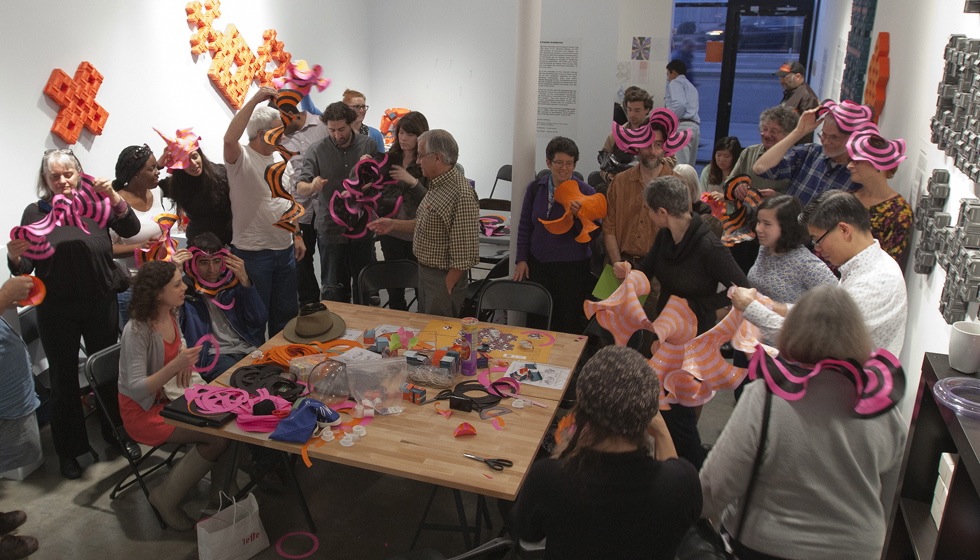Mathematicians long believed it was impossible to make models of hyperbolic space. Then the great Cornell geometer Bill Thurston discovered he could make these forms from circular rings of paper. Thurston’s model in turn inspired Dr. Daina Tamina to invent hyperbolic crochet. In this workshop we offer a rare opportunity to make Thurston’s annulus model of hyperbolic space. Led by mathematician Darryl Yong and using beautiful die-cut rings of paper specially stamped for this event, we’ll construct various hyperbolic surfaces. This is a one-off workshop and seating is limited.
All materials will be supplied. Admission is Free.
Dr. Darryl Yong is a mathematician at Harvey Mudd College with a special interest in math education and outreach. He co-directs the Harvey Mudd College Professional Development and Outreach Group and is the Principle Investigator for the Community of Ordinary Differential Equations Educators. Dr. Yong is on the steering committee for Math for America, Los Angeles, the local chapter of a major national initiative designed to support a new generation of inspired math teachers.
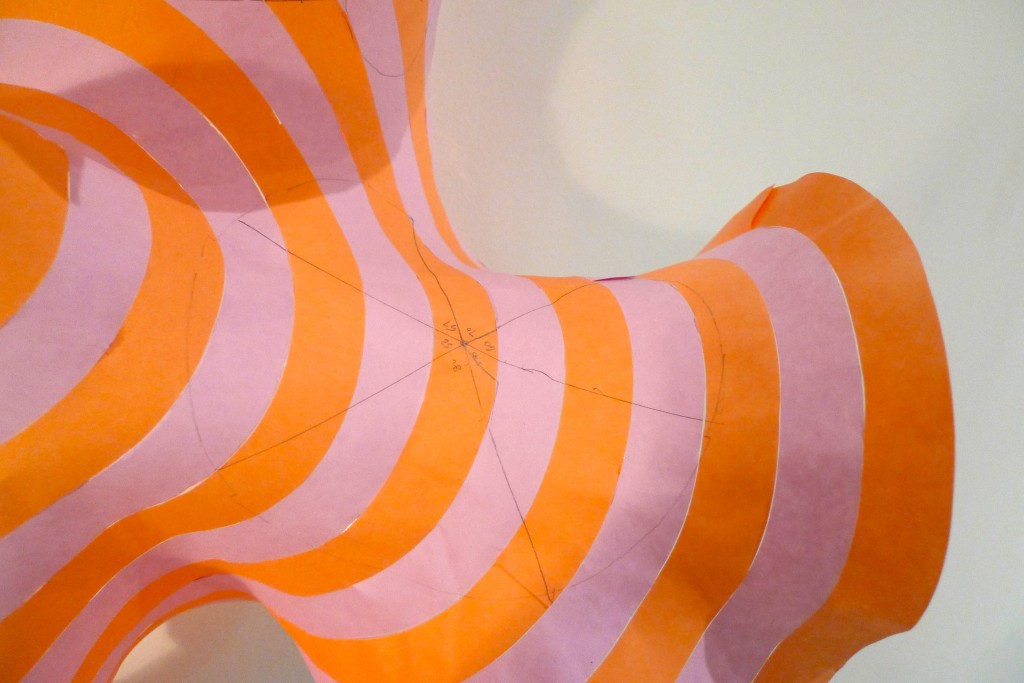
Annulus model of hyperbolic space, constructed by Margaret Cagle. On exhibition at the Institute For Figuring.
———————————————————————————————————————
WORKSHOP REPORT + PHOTOS
The IFF was packed to the rafters as more than 40 people joined us for this workshop. Dr. Yong gave us a short introductory talk about the mathematics of hyperbolic space, then quickly moved us on to active exploration and play. Some visitors chose to work in groups, others set out on their own paths. We had three colors of paper rings to choose from – orange, pink, and black – and it soon became clear that people had definite aesthetic preferences. All possible color combinations were selected by one group or another. But what was most surprising is that people turned the simple basic construction technique of gluing the rings together into such a wide diversity of forms. Some were strict followers of Bill Thurston’s original method, but many participants branched out into interpreting the rules for themselves. We were amazed and delighted by the various taxonomy of negative curvature surfaces that resulted. Many of these models have been added to the IFF’s permanent collection of hyperbolic models. Below are some photos of the event.
The IFF extends a special thank you to Dr. Yong and Harvey Mudd College for generously donating the die-cut and the paper construction rings.
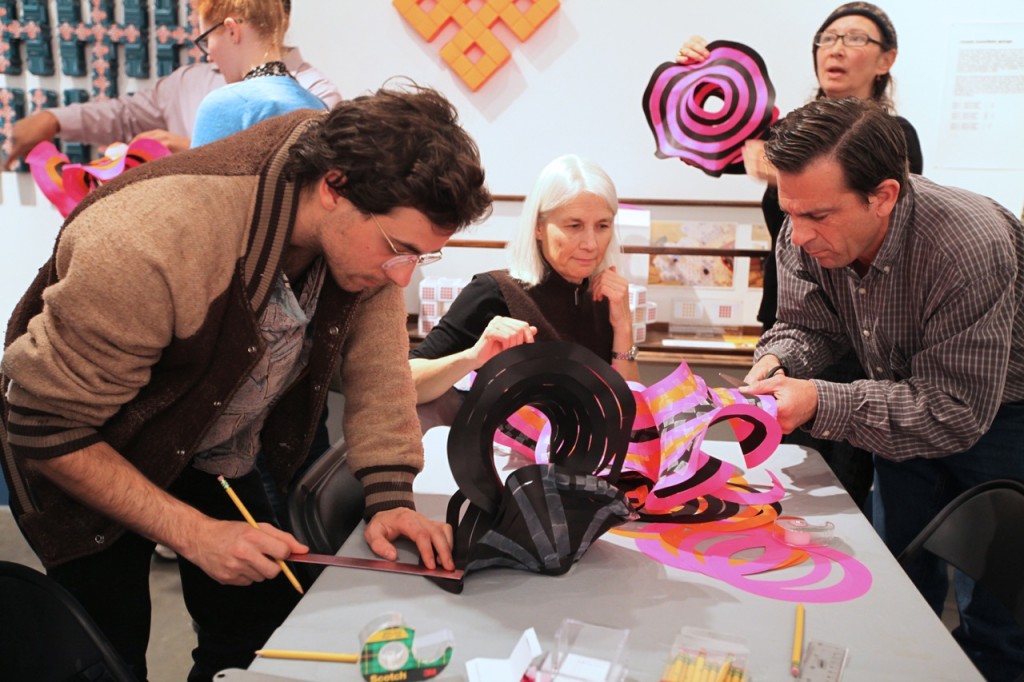
Workshop participants measure their models and determine that on a negative curvature surface parallel lines and triangles behave differently than on a Euclidean surface.
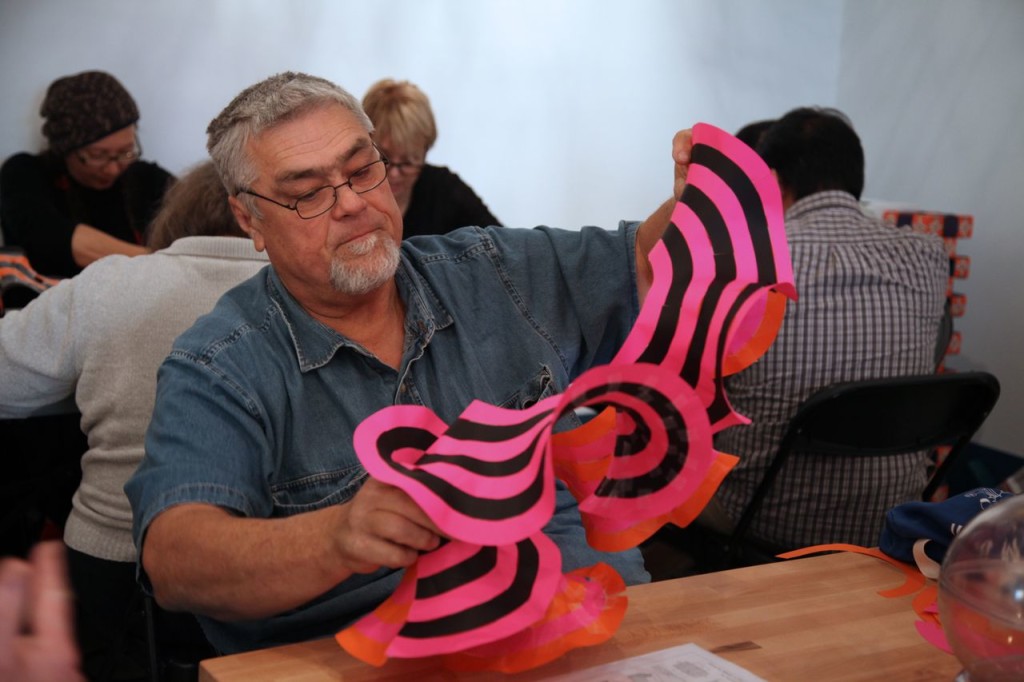
Workshop participant with a mathematically correct model of a hyperbolic plane. The black and pink consecutive rings highlight the gradual expansion of the hyperbolic space.
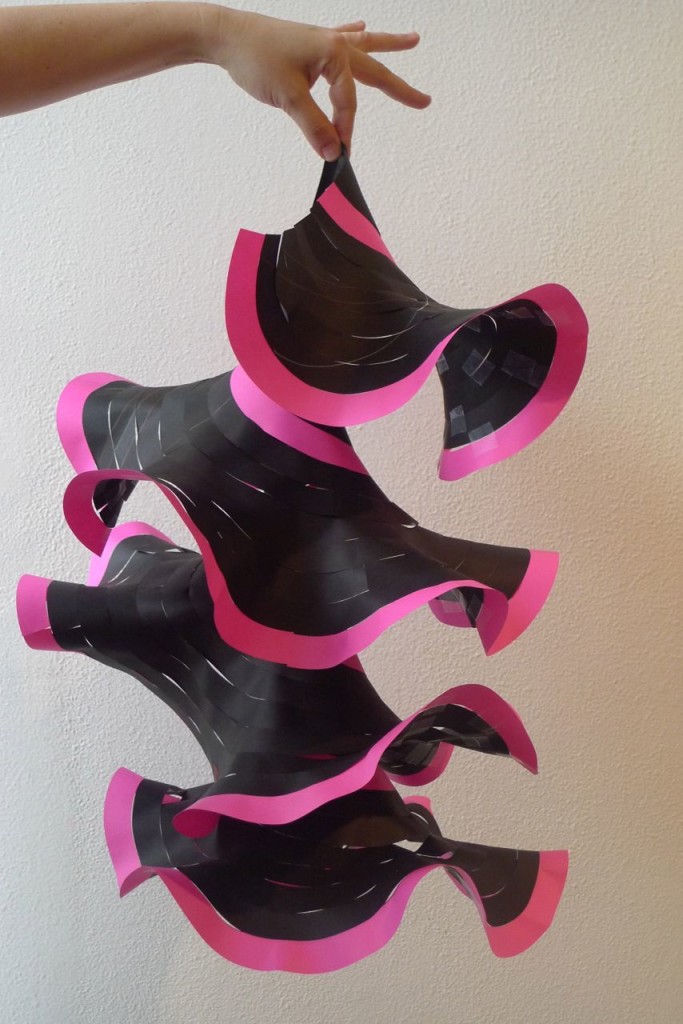
This lovely model of a hyperbolic plane resembles a sea slug, with the pink edge highlighting the hyperbolic frills.
